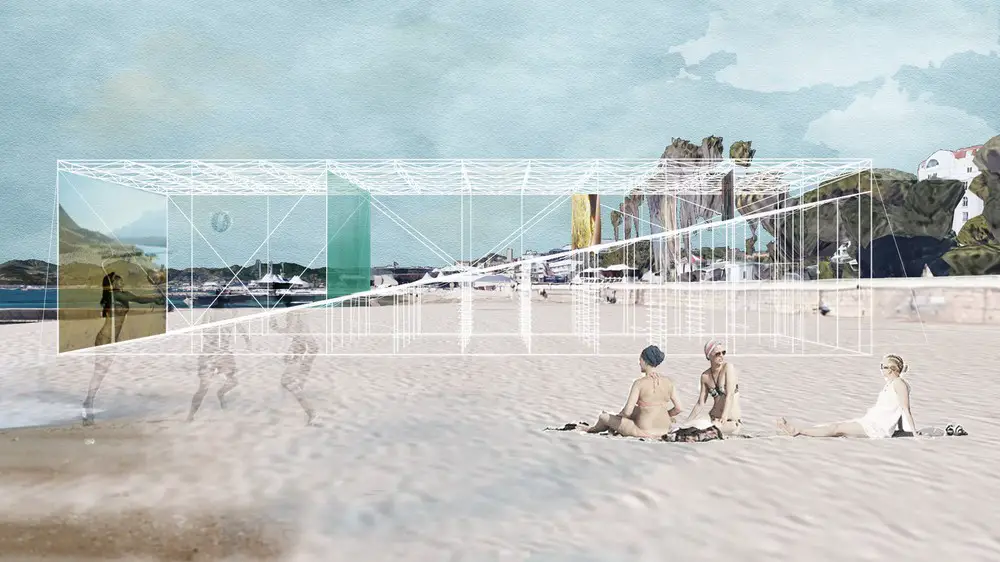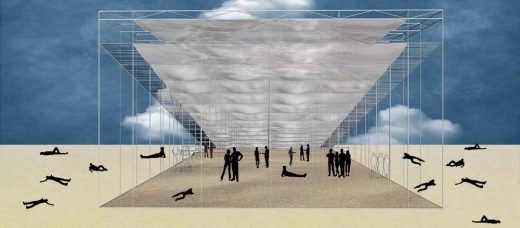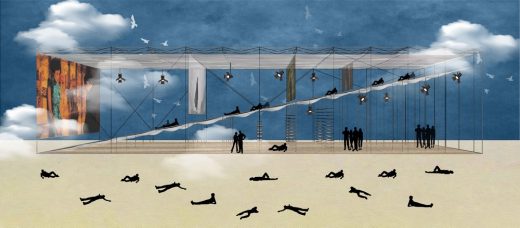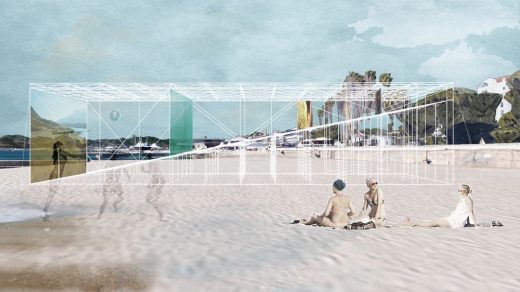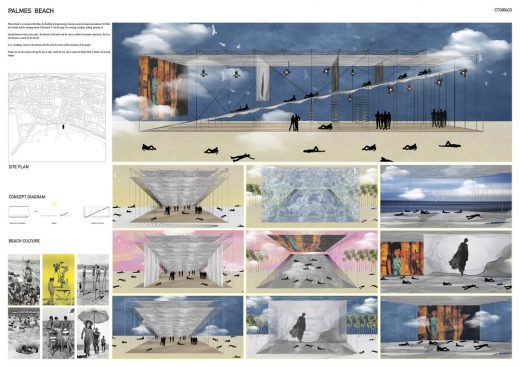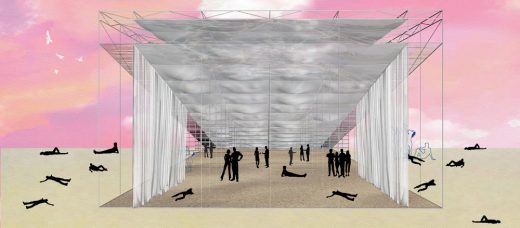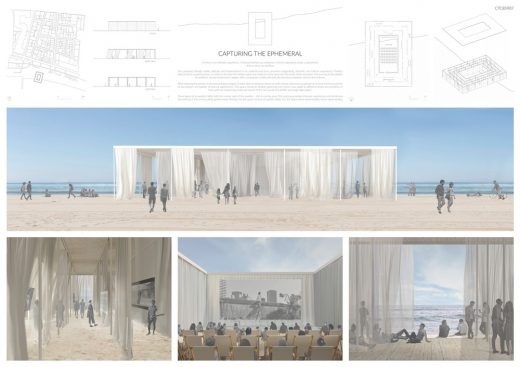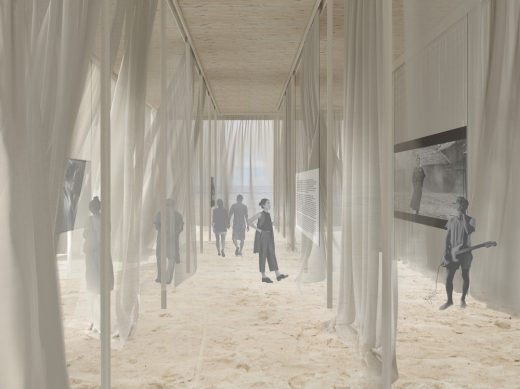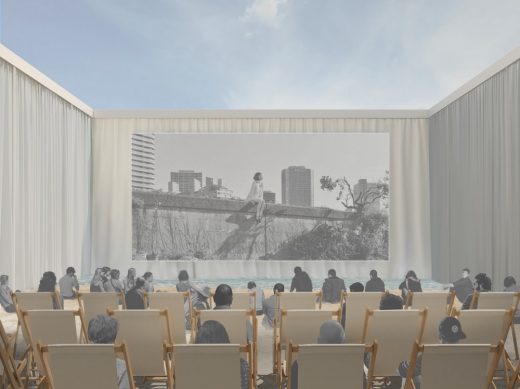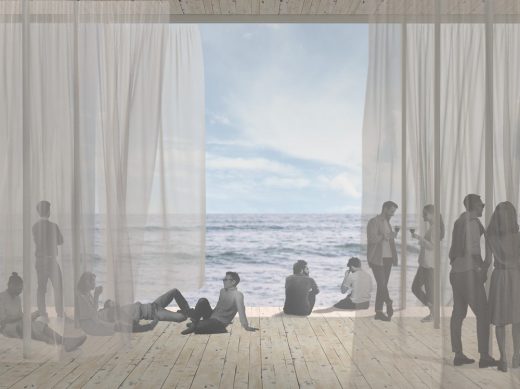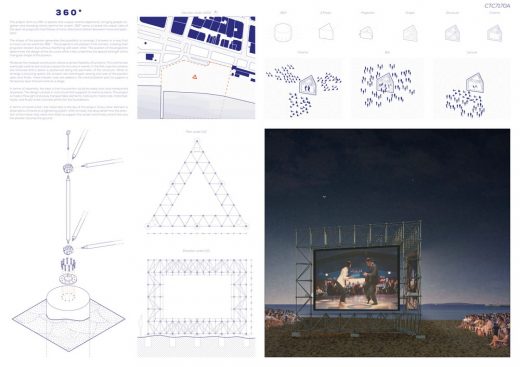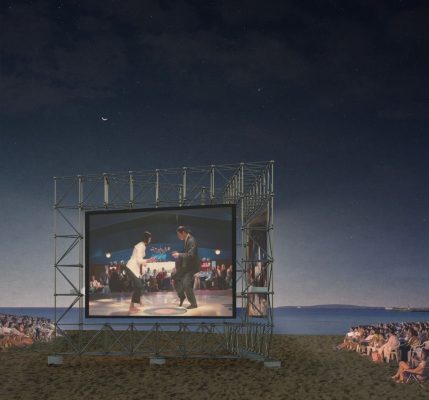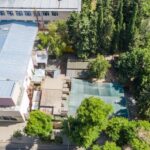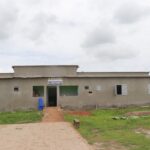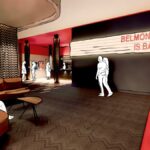Cannes Temporary Cinema Design Competition, French Riviera Architecture Contest, Building
Cannes Temporary Cinema Competition
19 June 2020
Cannes Temporary Cinema Design Competition
Location: Cannes, France
Cannes Temporary Cinema Winners
This competition generated 131 registrations.
Winners Summary:
FIRST PRIZE
CTC80433 Kamilla Csegzi, Miranda Vukasovic (USA)
SECOND PRIZE
CTC85907 Kamil Lipski, Wojciech Pisula, Agnieszka Słota (Poland)
THIRD PRIZE
CTC7170A Andrea Costa (Switzerland)
Cannes Temporary Cinema Competition Winners
FIRST PRIZE
‘Palms Beach’
Cannes: a blend between the breeze, the sun, the sand, the beach, the palms, the history of the city – the sensation of a slow time. Every year, this relative calmness is suspended by the frenziness of world cinema.
Sitting between these two dynamics, the temporary cinema is the manifestation of a spontaneous interaction between cinematic narratives, the flow of the natural elements and the beach life. As such, Palmes Beach is a living/breathing canvas that people can experience in multiple ways to gather, relax, watch the sea, and enjoy the ‘theatre’ both of shades and moving images.
With the overlap of these various realities – real time and cinematic time – an element of surreal emerges. This collage-like experience that we are proposing through our architecture, is not only a design, but it’s also the representation of the state of our mind, the creative process that we had followed through, and inevitably, it’s also our reflection on collective space in the context of the current times.
Miranda lives in Zagreb (Croatia), I live in New York City, and seeing our cities change under the pandemic in such a dramatic way, raises numerous questions about the future of public spaces and the nature of collective form at many scales. Distancing and confinement has been and it will be altering our social behaviour, but even though we are all physically apart, we have been ever more connected through the virtual and through an instinctive collective empathy.
The city has slowed down. The emptiness of the streets, the void within the stores, restaurants, offices, theatres, museums lends a nostalgic feel to the city. Services have become all digital. Concomitantly however, the quiet and the relative absence of human movement through the city, enables natural processes to become more visible, and as such, for us to feel more connected to the environment. The enhanced ambiguity between these two extremes – the natural and the virtual – is an opportunity to rethink the character of public spaces in their role to connect people.
For the Temporary Cinema in Cannes, we are proposing an almost invisible ‘armature’ that becomes present through its interplay with the breeze, the sun, the cinematic projections – and ultimately – through its interaction with people.
The multi-purpose pavilion is meant to be a mini convention center during the Film Festival, complimentary to the Palais des Festival. Its purpose is to recreate a virtual experience and aura of being in a film festival for all the spectators and crowds who miss out on the events at the Palais.
As such, ‘Palmes Beach’ is a merge between the theater experience and the beach, setting the stage for immersive 24×7 cinematic experiences and various other film-related talks and activities. The large canvas stretching across an infrastructural framework allows people to inhabit it in a spontaneous way, depending on the time of the day and the specific film they want to watch.
The simple diagonal gesture divides the frame into two halves:
– The lower part incorporates a welcoming space and other complementary functions. With the movable hanging furniture, there is a flexibility to configure the space in multiple ways. Depending on the activities: it can serve as a bar, a library where beach goers can pass by, or a place for panel discussions and other gatherings.
– The upper part is a big open platform facing the sea, where people can feel almost like floating on a boat, surrounded by the sea and film. The movable screens allow for multiple subdivisions, so that the space can be modulated for smaller or larger screenings. With the surrounding curtain, the pavilion can be completely open or enclosed, depending on the weather conditions and the desired intimacy.
As such, the pavilion is a fluid extension of the beach and it comes alive through the fleeting stories rippled by the breeze.
SECOND PRIZE
‘Capturing The Ephemeral’
Cinema is an intimate experience. Cinema enriches our existence. Cinema represents what is ephemeral.
And so does our pavilion.
Our proposal, though subtle, delicate and impermanent in its material and form, provides invigorating, dramatic and intense experience. Pavilion attracts by its mysteriousness. In order to discover the hidden value one needs to come deep into the heart of the structure. The journey to the depths of pavilion’s cloudy translucence begins with crossing the subtle and delicate boundary between interior and exterior.
After entering the pavilion truly sensorial game begins. It takes place in between layers of cloth, where subconscious presence of sand and the proximity of sea deepen rich palette of sensual experiences. This space serves as flexible gathering zone which may adapt to different needs and activities. In here, with accompanying smell and sound of the sea, social and artistic exchange takes place.
Three layers of moveable cloths hide the central spot of the pavilion – the screening area. This space guarantees intimate experiences and emotional discovering of the cinema, while gentle waves flowing into the space remind of seaside reality. It is the place where ephemerality meets ephemeral.
THIRD PRIZE
The project aims to offer a special and unique cinema experience, bringing people together and revealing what’s behind the screen. 360˚ wants to break the classic idea of the open-air projection that follows a mono-directional relation between movie and spectator.
The shape of the pavilion generates the possibility to arrange 3 screens in a way that a movie can be watched 360°. The projectors are placed in the corners, crossing their projection stream, but without interfering with each other. The position of the projectors determines the design of the structure while it also underlines the spatial strength of the triangular shape of the pavilion.
Moreover, the modular construction allows a certain flexibility of functions. The cinema can eventually work as bar and as a space for lectures or events. In the first case the screens are removed and a plane is positioned along the perimeter of the structure. While to arrange a lecturing space, the screens are rearranged, leaving one side of the pavilion open and finally more metallic rods are added in the central bottom part to support a temporary layer that will work as a stage.
In terms of assembly, the idea is that the pavilion could be easily built and transported anywhere. The design consists in a structure that supports 3 cinema screens. The project is made of few light and easily transportable elements: metal joint, metal rods, metal feet, hooks, and finally small concrete plinths for the foundations.
In terms of construction, the metal dice is the key of the project. Every other element is attached to it thanks to a tightening system. With its holes, the dices determine the direction of the metal rods; allow the hooks to support the screen and finally control the way the pavilion touches the ground.
Cannes Temporary Cinema Competition, France images / information received 190620
Location: Cannes, France
Architecture in Southeast France
On the Port of Cannes
Design: Heams & Michel Architectes
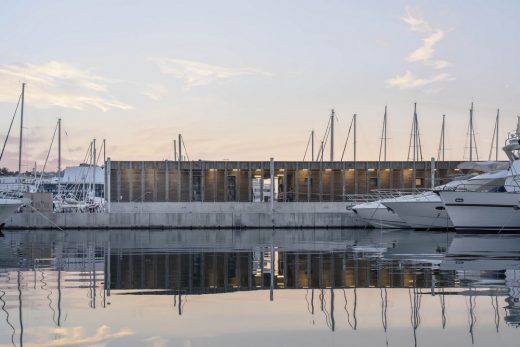
image courtesy of architects
On the Port of Cannes
Glass House, Cap d’Antibes, Provence-Alpes-Côte d’Azur region, southeastern France
Architects: David Price Design
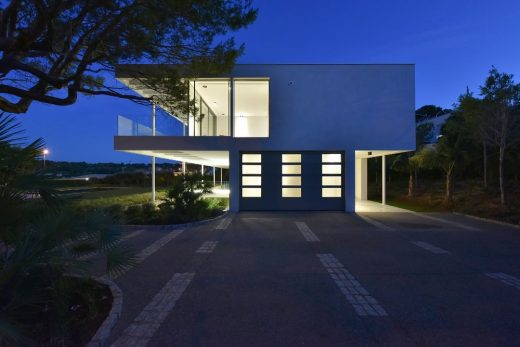
photograph : Hervé Hôte
House on the Cap d’Antibes
65 Croisette Boutique
Design: Moatti and Rivière
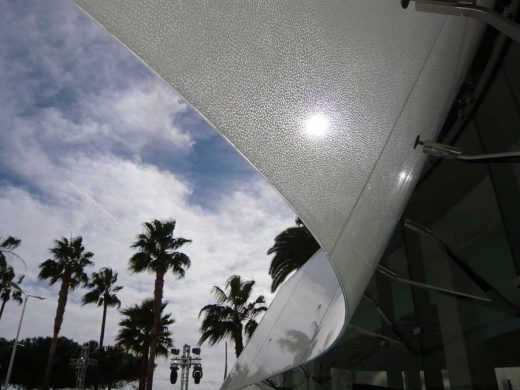
picture from architect
65 Croisette
Redline Apartments, La Seyne-sur-Mer, Var department, Provence-Alpes-Côte d’Azur region, southeastern France
Design: Pietri Architectes
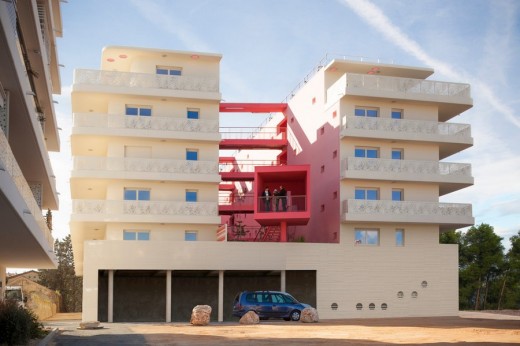
photograph : Serge Demailly
Apartments in the Provence-Alpes-Côte d’Azur region
Lycée René Goscinny near Drap, Alpes-Maritimes, southeast France
Design: José Morales architecte, Marseille
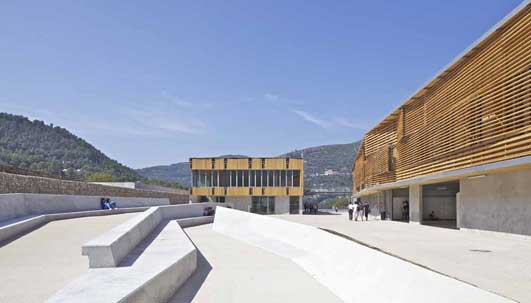
photo : Philippe Ruault
Lycée René Goscinny, Alpes-Maritimes
EHPAD in Grenoble + Mervans
Design: Tectoniques Architectes
Windshape, Lacoste, Provence
Design: nARCHITECTS
ZAC Beauvert, Grenoble
Design: AKTIS Architecture et Urbanisme
New Buildings in France
French Architectural Projects
French Architect Offices – design firm listings
Southern French Architecture
Zenith Saint-Etienne Building
Design: Foster + Partners
, Bargemon, Provence, southern France
Design: Dixon Jones and Jean-Paul Radigois
French Villa
Comments / photos for the Cannes Temporary Cinema Competition – France Property page welcome

